Will a Broken Ankle Bruise: Understanding Symptoms and Causes of Ankle Fractures
How do you recognize a broken ankle. What are the common causes of ankle fractures. Can a broken ankle lead to complications. How can you prevent ankle injuries.
Recognizing the Signs and Symptoms of a Broken Ankle
A broken ankle, also known as an ankle fracture, is a serious injury that can significantly impact your mobility and quality of life. But how can you tell if your ankle is broken or just sprained?
The most common symptoms of a broken ankle include:
- Immediate, throbbing pain
- Swelling around the affected area
- Bruising and discoloration
- Tenderness to touch
- Visible deformity or misalignment
- Difficulty or pain when walking or bearing weight
Is bruising always present with a broken ankle? While bruising is a common symptom, it may not appear immediately after the injury. The extent and timing of bruising can vary depending on the severity of the fracture and individual factors.
When Should You Seek Medical Attention?
It’s crucial to consult a doctor if you experience any of the following:
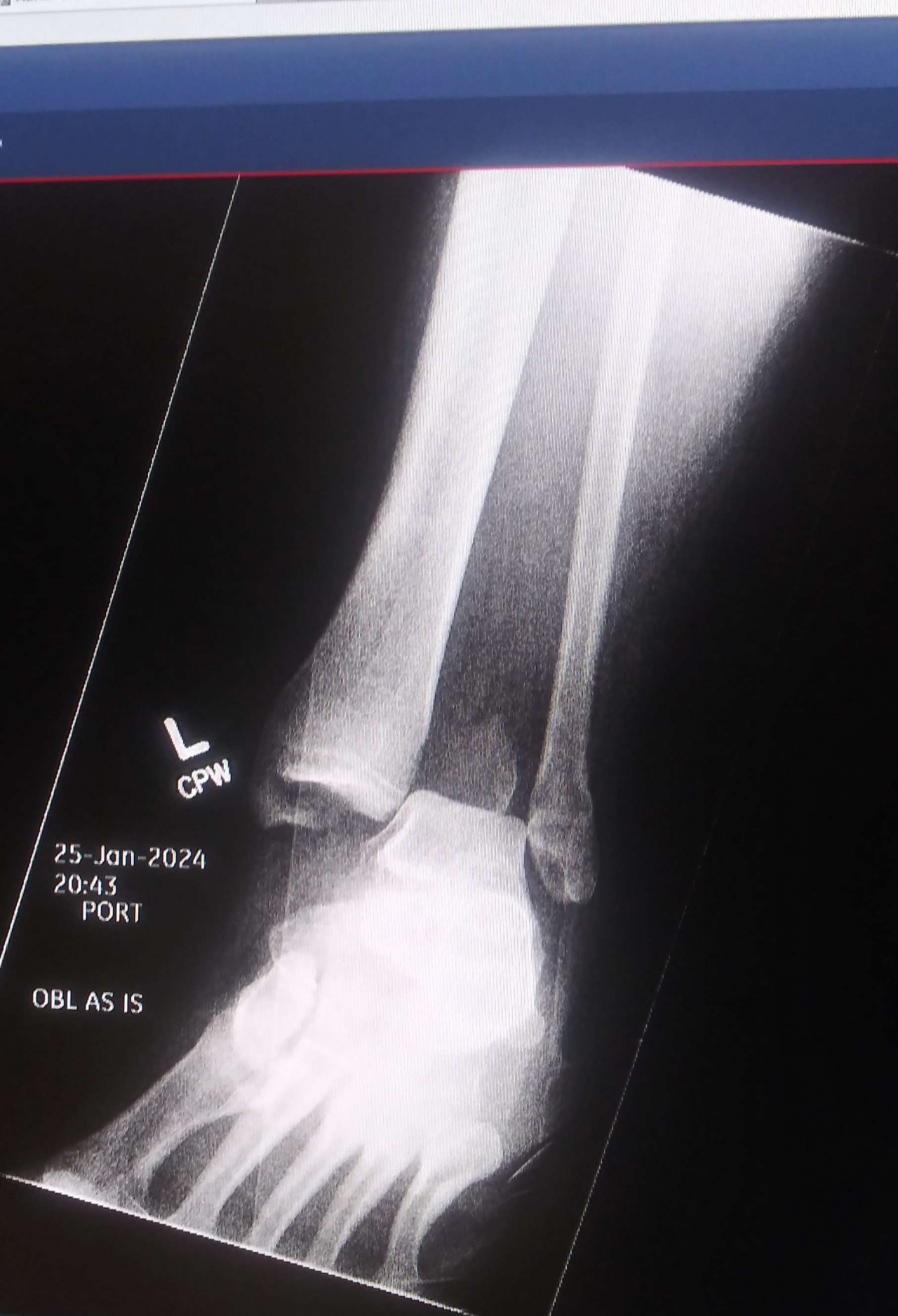
- Obvious deformity of the ankle
- Persistent pain and swelling that doesn’t improve with self-care
- Worsening pain or swelling over time
- Inability to walk or bear weight on the affected foot
Prompt medical evaluation is essential for proper diagnosis and treatment of a broken ankle.
Understanding the Anatomy of Ankle Fractures
To fully comprehend the nature of ankle fractures, it’s important to understand the anatomy of the ankle joint. The ankle consists of three main bones:
- The tibia (shinbone)
- The fibula (the smaller bone in the lower leg)
- The talus (a small bone that sits between the heel bone and the tibia and fibula)
An ankle fracture can involve one or more of these bones. The severity of the fracture depends on which bones are affected and the extent of the damage.
Types of Ankle Fractures
Ankle fractures can be categorized based on the location and number of breaks:
- Lateral malleolus fracture: Involves the lower end of the fibula
- Medial malleolus fracture: Affects the inner portion of the tibia
- Posterior malleolus fracture: Involves the back of the tibia
- Bimalleolar fracture: Includes breaks in both the lateral and medial malleoli
- Trimalleolar fracture: Involves all three malleoli (lateral, medial, and posterior)
Understanding the type of fracture is crucial for determining the appropriate treatment approach.

Common Causes and Risk Factors for Broken Ankles
Ankle fractures can occur due to various reasons, ranging from everyday accidents to high-impact sports injuries. What are the most frequent causes of broken ankles?
- Twisting injuries: Sudden rotational forces applied to the ankle joint
- Falls: Especially from heights or during activities like hiking or climbing
- Direct trauma: Such as in car accidents or contact sports
- Missteps: Sometimes, simply putting your foot down awkwardly can lead to a fracture
Certain factors can increase your risk of experiencing an ankle fracture:
- Participation in high-impact sports (e.g., basketball, football, gymnastics)
- Use of improper sports equipment or techniques
- Sudden increase in physical activity levels
- Living in a cluttered or poorly lit environment
- Osteoporosis or decreased bone density
- Smoking, which can affect bone health and healing
By understanding these risk factors, you can take steps to minimize your chances of experiencing a broken ankle.
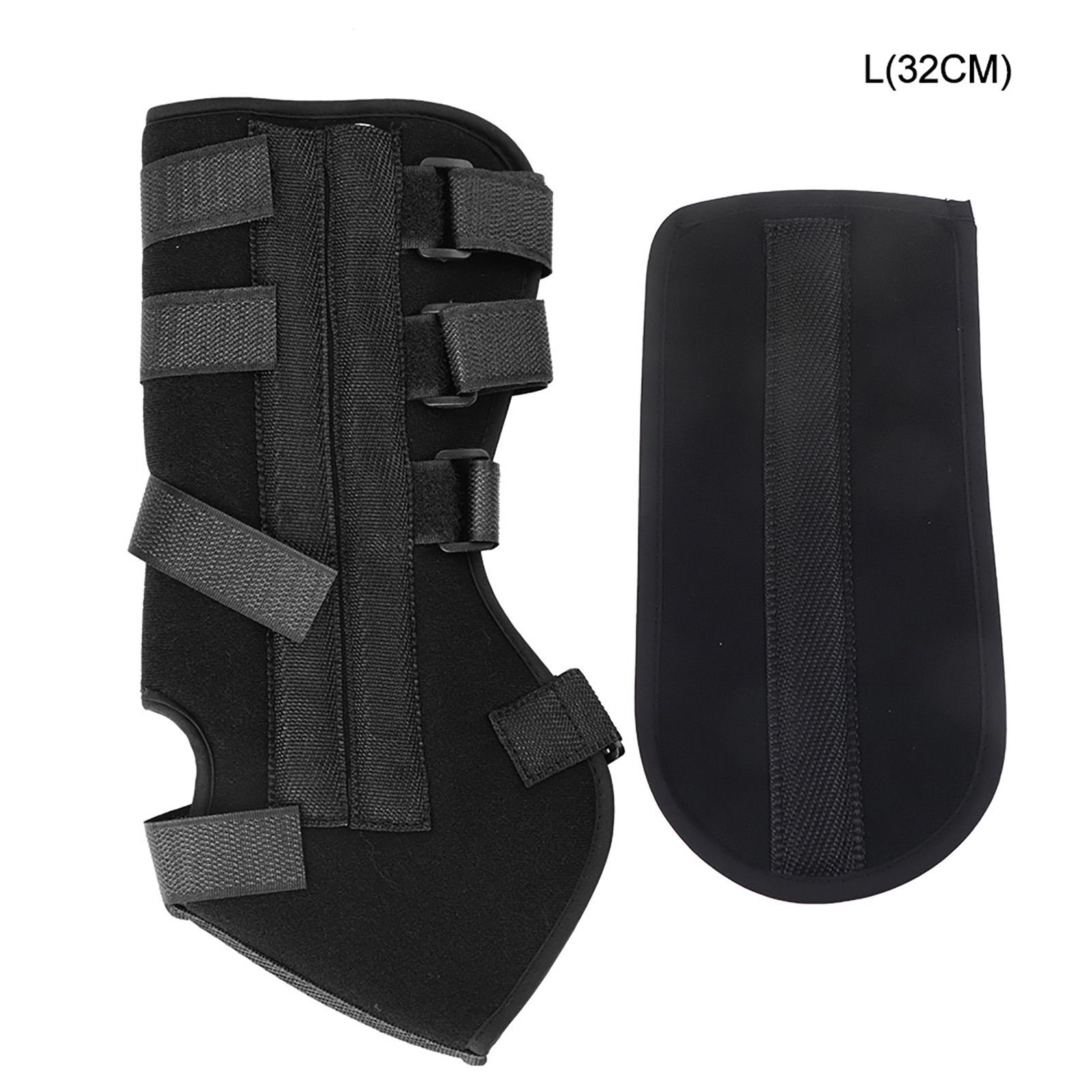
Diagnosis and Treatment Options for Ankle Fractures
Accurate diagnosis is crucial for effective treatment of a broken ankle. How do doctors diagnose ankle fractures?
- Physical examination: Assessing pain, swelling, and range of motion
- Imaging tests: X-rays, CT scans, or MRI to visualize the bones and soft tissues
- Stress tests: To check the stability of the ankle joint
Once diagnosed, the treatment approach depends on the severity and location of the fracture. What are the common treatment options for broken ankles?
Non-surgical Treatment
For less severe fractures, non-surgical treatments may include:
- Immobilization with a cast or boot
- Crutches or a wheelchair to avoid weight-bearing
- Pain management with medications
- Physical therapy for rehabilitation
Surgical Treatment
More severe fractures may require surgical intervention, which can involve:
- Internal fixation with plates, screws, or rods
- External fixation for complex or open fractures
- Reconstruction of damaged ligaments
The choice between surgical and non-surgical treatment depends on factors such as the patient’s age, overall health, and activity level.
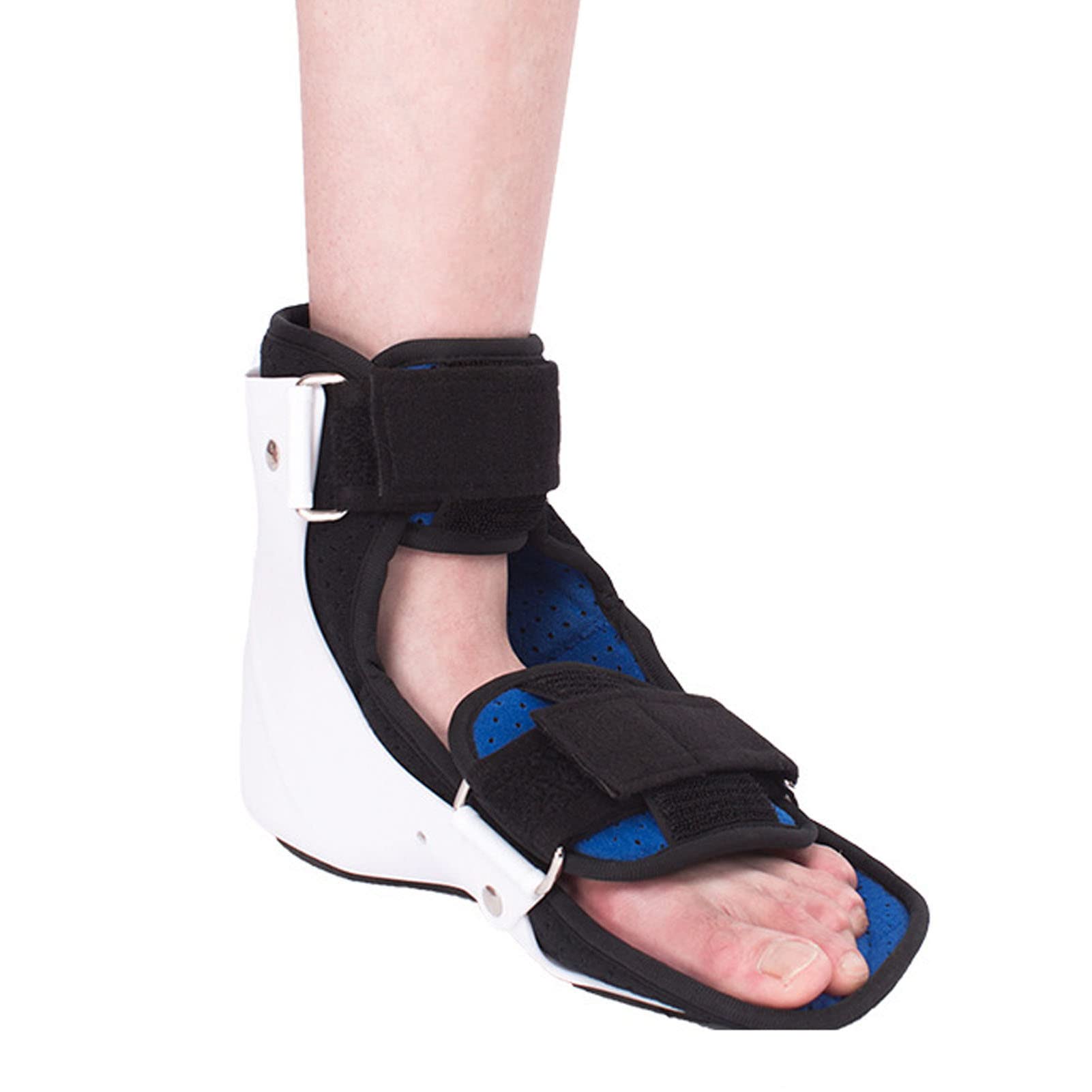
Potential Complications of Ankle Fractures
While most ankle fractures heal without significant issues, complications can occur. What are the potential complications associated with broken ankles?
- Arthritis: Fractures extending into the joint can lead to post-traumatic arthritis
- Infection: Particularly in open fractures where the bone is exposed
- Compartment syndrome: A rare but serious condition causing increased pressure in muscle compartments
- Nerve or blood vessel damage: Which can result in numbness or circulation problems
- Malunion or nonunion: Improper healing or failure of the bone to heal
Regular follow-up with your healthcare provider is essential to monitor healing and detect any potential complications early.
Recovery and Rehabilitation After an Ankle Fracture
The recovery process following an ankle fracture can be lengthy and challenging. What does the typical recovery timeline look like?
- Immediate post-injury or post-surgery: Focus on pain management and protection of the ankle
- Early recovery (4-6 weeks): Gradual increase in weight-bearing as tolerated
- Mid-recovery (6-12 weeks): Transition from immobilization to controlled movement
- Late recovery (3-6 months): Progressive strengthening and return to normal activities
Rehabilitation plays a crucial role in restoring function and strength to the injured ankle. What does rehabilitation typically involve?
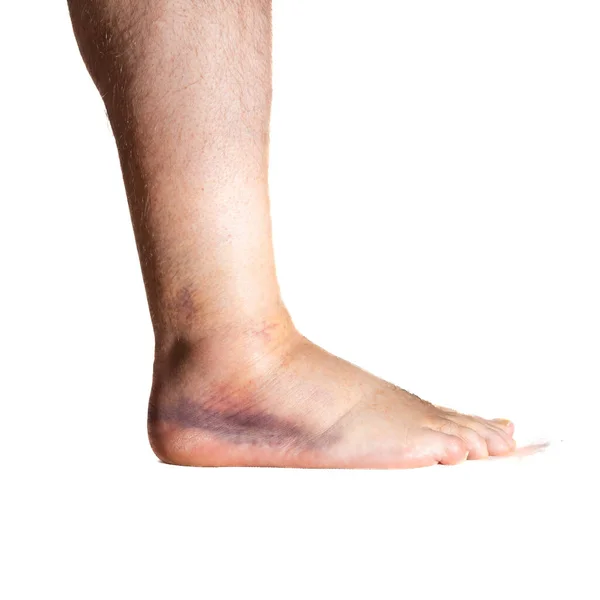
- Range of motion exercises
- Strengthening exercises for ankle and lower leg muscles
- Balance and proprioception training
- Gait training to ensure proper walking mechanics
- Sport-specific exercises for athletes
The duration and intensity of rehabilitation can vary depending on the severity of the fracture and individual factors.
Preventive Measures to Reduce the Risk of Ankle Fractures
While not all ankle fractures can be prevented, there are steps you can take to reduce your risk. How can you protect yourself from ankle injuries?
- Wear appropriate footwear for your activities
- Replace athletic shoes regularly to ensure proper support
- Start new exercise programs gradually
- Cross-train to prevent overuse injuries
- Maintain a healthy diet rich in calcium and vitamin D for strong bones
- Keep your living space clutter-free to prevent falls
- Strengthen ankle muscles through targeted exercises
By incorporating these preventive measures into your daily routine, you can significantly reduce your risk of experiencing a broken ankle.

Long-term Outlook and Quality of Life After an Ankle Fracture
What can patients expect in terms of long-term outcomes after recovering from a broken ankle? The prognosis largely depends on the severity of the initial injury, the quality of treatment received, and the individual’s commitment to rehabilitation.
Many people who experience ankle fractures can expect to regain full or near-full function of their ankle with proper treatment and rehabilitation. However, some may experience lasting effects, such as:
- Reduced range of motion in the ankle joint
- Persistent swelling or stiffness
- Increased risk of post-traumatic arthritis
- Need for supportive footwear or orthotics
- Limitations in high-impact activities
How can patients optimize their long-term outcomes after an ankle fracture?
- Follow medical advice and treatment plans closely
- Commit to a comprehensive rehabilitation program
- Maintain a healthy weight to reduce stress on the ankle joint
- Engage in regular, low-impact exercises to maintain strength and flexibility
- Use proper techniques and equipment when participating in sports
- Be mindful of uneven surfaces and potential hazards to prevent re-injury
By taking a proactive approach to recovery and ongoing ankle health, patients can maximize their chances of a positive long-term outcome following an ankle fracture.
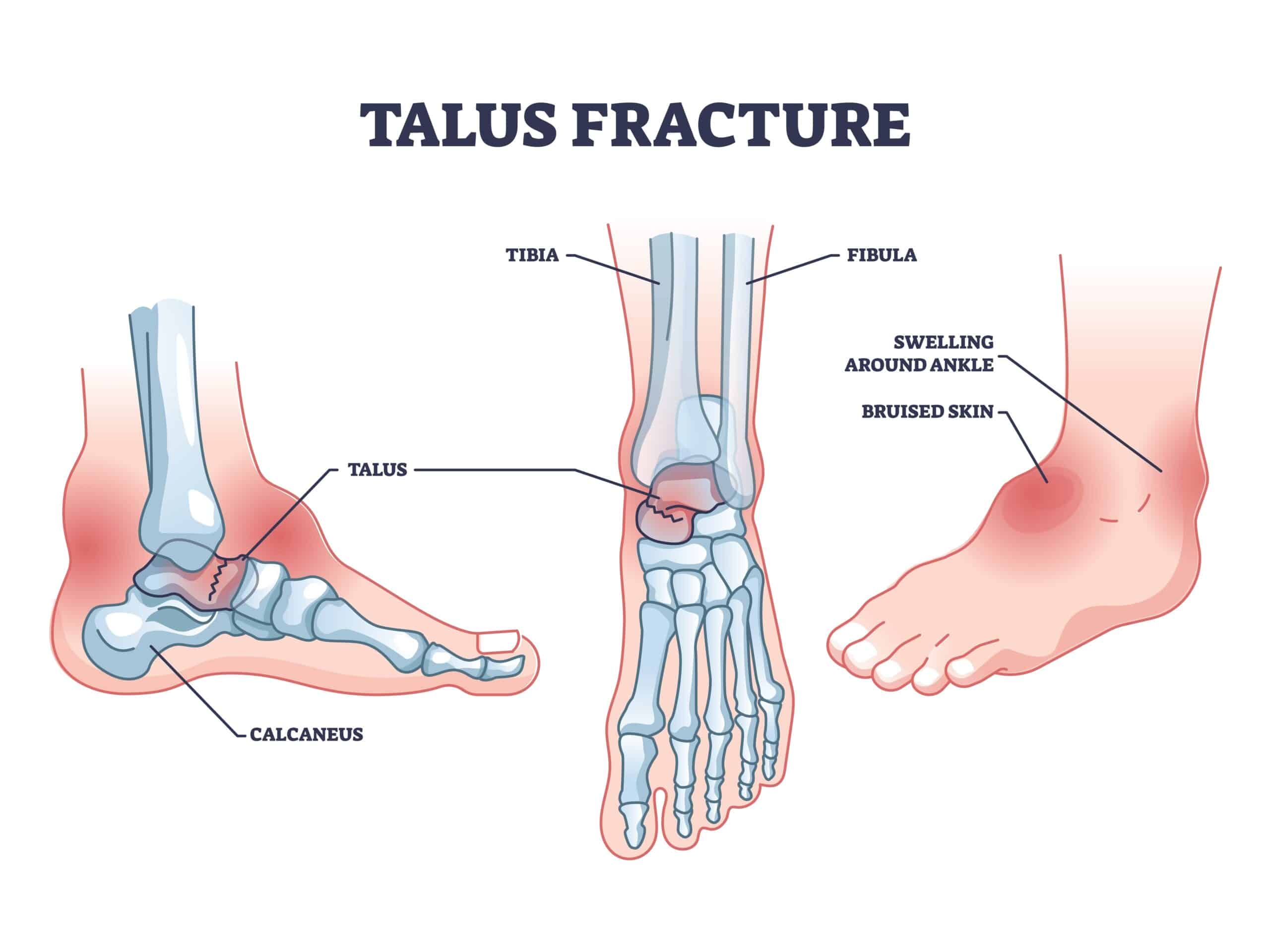
Psychological Impact of Ankle Fractures
The physical aspects of a broken ankle are often the primary focus, but it’s important to acknowledge the psychological impact as well. How can an ankle fracture affect a person’s mental health?
- Frustration and impatience during the recovery process
- Anxiety about potential re-injury or long-term limitations
- Depression related to temporary loss of independence or inability to participate in favorite activities
- Body image concerns, especially if there are visible scars or changes in gait
Addressing these psychological aspects is crucial for a holistic recovery. Patients may benefit from:
- Counseling or therapy to process emotions related to the injury
- Support groups for individuals recovering from similar injuries
- Mindfulness and relaxation techniques to manage stress and anxiety
- Setting realistic goals and celebrating small victories during recovery
By addressing both the physical and psychological aspects of recovery, patients can achieve better overall outcomes and quality of life following an ankle fracture.

Advances in Ankle Fracture Treatment
Medical science continues to evolve, bringing new advancements in the treatment of ankle fractures. What are some of the recent developments in this field?
- Minimally invasive surgical techniques: Reducing scarring and potentially speeding up recovery
- 3D-printed implants: Custom-designed to fit individual patient anatomy
- Bioabsorbable implants: Gradually dissolve in the body, eliminating the need for removal
- Enhanced imaging technologies: Improving diagnostic accuracy and surgical planning
- Stem cell therapies: Potentially accelerating bone healing and tissue regeneration
These advancements offer promising options for improving outcomes and reducing recovery times for patients with ankle fractures. However, it’s important to note that not all new technologies are suitable for every patient or type of fracture. Your healthcare provider can guide you on the most appropriate treatment options based on your specific case.
The Role of Nutrition in Ankle Fracture Recovery
Proper nutrition plays a crucial role in bone healing and overall recovery from an ankle fracture. What dietary considerations should patients keep in mind?

- Adequate protein intake: Essential for tissue repair and bone healing
- Calcium-rich foods: To support bone strength and density
- Vitamin D: Necessary for calcium absorption and bone metabolism
- Vitamin C: Important for collagen formation and wound healing
- Zinc: Supports immune function and wound healing
- Omega-3 fatty acids: May help reduce inflammation
A balanced diet rich in these nutrients can support faster healing and better overall outcomes. In some cases, your healthcare provider may recommend dietary supplements to ensure you’re meeting your nutritional needs during recovery.
The Impact of Age on Ankle Fracture Recovery
Age can significantly influence both the occurrence and recovery of ankle fractures. How does age factor into ankle fracture prognosis and treatment?
- Children and adolescents: Generally heal faster due to active growth plates and robust bone metabolism
- Young adults: Often experience good outcomes with appropriate treatment
- Middle-aged adults: May have longer healing times and increased risk of complications
- Older adults: Higher risk of fractures due to osteoporosis, potentially longer recovery times, and increased risk of complications
Treatment approaches may need to be tailored based on the patient’s age. For example, older adults might require more conservative treatment to avoid surgical risks, while younger patients might benefit from more aggressive interventions to ensure optimal long-term function.

The Importance of Patient Education in Ankle Fracture Management
Effective management of ankle fractures relies heavily on patient understanding and cooperation. What aspects of patient education are crucial for optimal outcomes?
- Understanding the nature of the injury and treatment plan
- Proper use of assistive devices (crutches, walkers, etc.)
- Wound care and infection prevention for surgical patients
- Adherence to weight-bearing restrictions and activity limitations
- Recognition of signs that warrant immediate medical attention
- Importance of follow-up appointments and rehabilitation
Healthcare providers play a vital role in ensuring patients are well-informed about their condition and actively involved in their recovery process. This collaborative approach can lead to better compliance with treatment plans and ultimately, improved outcomes.
By understanding the complexities of ankle fractures, from initial injury through long-term recovery, patients and healthcare providers can work together to achieve the best possible outcomes. Whether you’re dealing with a broken ankle or seeking to prevent one, staying informed and proactive about ankle health is key to maintaining mobility and quality of life.

Broken ankle – Symptoms & causes
Overview
A broken or fractured ankle is an injury to the bone. You may experience a broken ankle from a twisting injury from a simple misstep or fall, or from direct trauma during a car crash, for example.
Foot and ankle bones
A fall or blow to your ankle can break one or more of the three bones in your ankle joint the fibula, the tibia and the talus. Rolling your ankle can cause a break in the knobby bumps at the end of the tibia and fibula.
The seriousness of a broken ankle varies. Fractures can range from tiny cracks in your bones to breaks that pierce your skin.
Treatment for a broken ankle depends on the exact site and severity of the bone fracture. A severely broken ankle may require surgery to implant plates, rods or screws into the broken bone to maintain proper position during healing.
Products & Services
Symptoms
If you have a broken ankle, you may experience some of the following signs and symptoms:
- Immediate, throbbing pain
- Swelling
- Bruising
- Tenderness
- Deformity
- Difficulty or pain with walking or bearing weight
When to see a doctor
See a doctor if there is obvious deformity, if the pain and swelling don’t get better with self-care, or if the pain and swelling get worse over time. Also, see a doctor if the injury interferes with walking.
Also, see a doctor if the injury interferes with walking.
Causes
A broken ankle is usually a result of a twisting injury, but can also be caused by a direct blow to the ankle.
The most common causes of a broken ankle include:
- Car accidents. The crushing injuries common in car accidents may cause breaks that require surgical repair.
- Falls. Tripping and falling can break bones in your ankles, as can landing on your feet after jumping down from just a slight height.
- Missteps. Sometimes just putting your foot down wrong can result in a twisting injury that can cause a broken bone.
Risk factors
You may be at higher risk of a broken ankle if you:
- Participate in high-impact sports. The stresses, direct blows and twisting injuries that occur in sports such as basketball, football, gymnastics, tennis and soccer can cause ankle fractures.
- Use improper technique or sports equipment.
 Faulty equipment, such as shoes that are too worn or not properly fitted, can contribute to stress fractures and falls. Improper training techniques, such as not warming up and stretching, also can cause ankle injuries.
Faulty equipment, such as shoes that are too worn or not properly fitted, can contribute to stress fractures and falls. Improper training techniques, such as not warming up and stretching, also can cause ankle injuries. - Suddenly increase your activity level. Whether you’re a trained athlete or someone who’s just started exercising, suddenly boosting the frequency or duration of your exercise sessions can increase your risk of a stress fracture.
- Keep your home cluttered or poorly lit. Walking around in a house with too much clutter or too little light may lead to falls and ankle injuries.
- Have certain conditions. Having decreased bone density (osteoporosis) can put you at risk of injuries to your ankle bones.
- Smoking. Cigarette smoking can increase your risk of developing osteoporosis. Studies also show that healing after a fracture may take longer in people who smoke.
Complications
Complications of a broken ankle are uncommon but may include:
- Arthritis.
 Fractures that extend into the joint can cause arthritis years later. If your ankle starts to hurt long after a break, see your doctor for an evaluation.
Fractures that extend into the joint can cause arthritis years later. If your ankle starts to hurt long after a break, see your doctor for an evaluation. - Bone infection (osteomyelitis). If you have an open fracture, meaning one end of the bone protrudes through the skin, your bone may be exposed to bacteria that cause infection.
- Compartment syndrome. This condition can rarely occur with ankle fractures. It causes pain, swelling and sometimes disability in affected muscles of the legs.
- Nerve or blood vessel damage. Trauma to the ankle can injure nerves and blood vessels, sometimes actually tearing them. Seek immediate attention if you notice any numbness or circulation problems. Lack of blood flow can cause a bone to die and collapse.
Prevention
These basic sports and safety tips may help prevent a broken ankle:
- Wear proper shoes. Use hiking shoes on rough terrain. Choose appropriate athletic shoes for your sport.

- Replace athletic shoes regularly. Discard sneakers as soon as the tread or heel wears out or if the shoes are wearing unevenly. If you’re a runner, replace your sneakers every 300 to 400 miles.
- Start slowly. That applies to a new fitness program and each individual workout.
- Cross-train. Alternating activities can prevent stress fractures. Rotate running with swimming or biking.
- Build bone strength. Get enough calcium and vitamin D. Calcium-rich foods include milk, yogurt and cheese. Ask your doctor if you need to take vitamin D supplements.
- Declutter your house. Keeping clutter off the floor can help you to avoid trips and falls.
- Strengthen your ankle muscles. If you are prone to twisting your ankle, ask your doctor for exercises to help strengthen the supporting muscles of your ankle.
Broken Ankle or a Sprain: How do you Know?
February 8, 2018
You fall and injure your ankle. Next you gauge your pain and ask: “Is it a broken ankle or a sprain?” This scenario accounts for one of the most common complaints; yet a simple twist and fall could become a complex injury involving bone, cartilage, ligaments and tendons. In this blog I will discuss ankle fractures and what the next steps are on the road to recovery.
Next you gauge your pain and ask: “Is it a broken ankle or a sprain?” This scenario accounts for one of the most common complaints; yet a simple twist and fall could become a complex injury involving bone, cartilage, ligaments and tendons. In this blog I will discuss ankle fractures and what the next steps are on the road to recovery.
Ankle Anatomy
Three bones make up the ankle: the tibia, the fibula, and the talus. The tibia and fibula are commonly involved in a broken ankle (ankle fracture). These articulate in multiple directions to account for the ankle’s complex range of motion. Motion between bones occurs against smooth surfaces covered with cartilage. Cartilage allows for fluid motion at a joint due to its low level of friction. For those familiar with carpentry, you can think of these bones as a mortise and tenon joint where the talus bone acts as the tenon (tongue) attached to the foot and the tibia and fibular act as the mortise making up the lower leg.
These bones are secured by ligaments (deltoid, syndesmosis, lateral ligament complex) that maintain this relationship. The deltoid ligament originates from the medial malleolus (medial tibia) and inserts on the talus, calcaneus and navicular bones of the foot distally. While commonly injured, surgical repair of this ligament is often unnecessary. The lateral ligament complex includes the anterior talofibular ligament (ATFL), the calcaneofibular ligament (CFL), and the posterior talofibular ligament (PTFL). The most common type of ankle sprain involves the ATFL. The third major ligament complex is called the syndesmosis. This connects between the fibula and tibia throughout the lower leg. Injuries to this ligament are often referred to as a “high ankle sprain” and develop with rotation.
The deltoid ligament originates from the medial malleolus (medial tibia) and inserts on the talus, calcaneus and navicular bones of the foot distally. While commonly injured, surgical repair of this ligament is often unnecessary. The lateral ligament complex includes the anterior talofibular ligament (ATFL), the calcaneofibular ligament (CFL), and the posterior talofibular ligament (PTFL). The most common type of ankle sprain involves the ATFL. The third major ligament complex is called the syndesmosis. This connects between the fibula and tibia throughout the lower leg. Injuries to this ligament are often referred to as a “high ankle sprain” and develop with rotation.
Pain free motion of the ankle relies heavily on this complex congruent relationship between the talus and the tibia and fibula. If the ankle joint is even displaced 1mm, a 42% increase in pressure to ankle may occur1. A change in the bony anatomy of the ankle involved with an ankle fracture may introduce enough change in alignment that the ankle is now at risk for future arthritis.
Is the Ankle Sprained or Broken?
A thorough evaluation by an Orthopedic Specialist in Foot and Ankle such as Dr. Miller will identify the nature of the injury. Immediately following the injury, it is reasonable to assess the ankle with weight bearing. If there is no pain with walking, an ankle fracture is highly unlikely. Soreness with walking but the ability to walk normally suggests a contusion or sprain of the ankle. However, if you cannot stand on the ankle, an evaluation is warranted to rule out a broken ankle or ankle fracture.
Swelling is another sign of injury. If the swelling comes on gradually and is mild, the injury is likely a sprain or less severe. More immediate and significant swelling indicates a bony injury and possible fracture. When severe fractures occur, blistering of the skin is not uncommon. The blisters emanate from excessive swelling in the soft tissues following a severe fracture. Sometimes the ankle is dislocated with this amount of swelling. Immediate medical attention is required in these circumstances to reduce the ankle. Once severe swelling or blistering sets in, this can take weeks until the initial swelling resolves. In many cases these changes can delay surgery on the ankle.
Immediate medical attention is required in these circumstances to reduce the ankle. Once severe swelling or blistering sets in, this can take weeks until the initial swelling resolves. In many cases these changes can delay surgery on the ankle.
As time passes ecchymosis (bruising) may occur. This can be extensive; however, this does not necessarily mean the ankle is broken. More severe ankle sprains present with significant ecchymosis over the region of injury. Besides not being able to put pressure down on the ankle or a deformity in the ankle after injury, a good reason to be evaluated for a broken ankle/ankle fracture is continued symptoms that worsen or stay the same. Some ankle fractures are stable enough that you may still be able to walk. Some people have a high pain tolerance that allows them to cope with the injury. These scenarios are best evaluated by an orthopedic surgeon when not improving.
Orthopedic Evaluation
Once you have made the decision to be evaluated for ankle pain, Dr. Miller will assess you and your injury as a whole. This includes a detailed history and physical examination with special focus on the ankle. Your age, mobility level and medical history are important, particularly as it relates to the ability heal an injury or recover from a potential surgery. Preexisting medical conditions such as diabetes, vascular problems, and inflammatory disease (e.g. rheumatoid) must be accounted for during the planning of treatment. Any remote history related to the ankle or previous injury should be known.
Miller will assess you and your injury as a whole. This includes a detailed history and physical examination with special focus on the ankle. Your age, mobility level and medical history are important, particularly as it relates to the ability heal an injury or recover from a potential surgery. Preexisting medical conditions such as diabetes, vascular problems, and inflammatory disease (e.g. rheumatoid) must be accounted for during the planning of treatment. Any remote history related to the ankle or previous injury should be known.
Physical examination will be performed during your visit. It is important to assess the ankle based on its appearance including deformity, any open wounds around the ankle, the amount of swelling present, and any preexisting rashes or skin issues. Vascular exam is used to determine the appropriate blood flow to the lower extremity, and this is performed by checking the dorsalis pedis and posterior tibialis pulses surrounding the foot and ankle. A neurological exam of the lower extremity will be used to assess any nerve injuries and the ability to move the foot.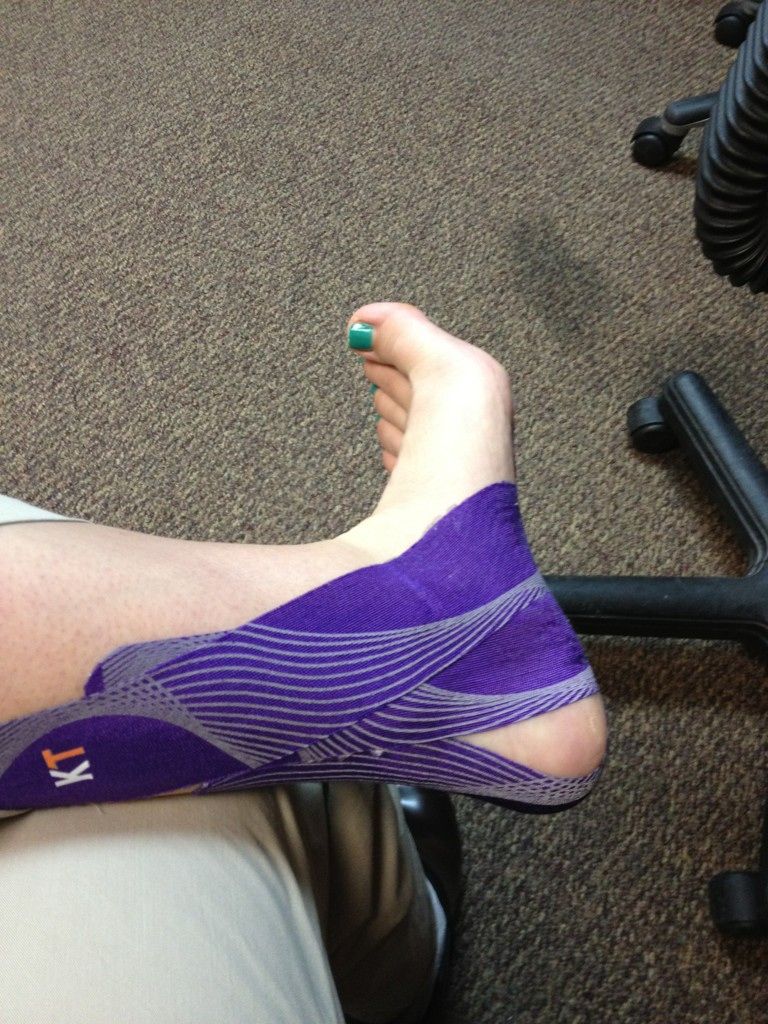 The extremity will then be evaluated for areas of tenderness and pain. This will help to locate the injury in a broken ankle more specifically and rule out other concurrent pathology.
The extremity will then be evaluated for areas of tenderness and pain. This will help to locate the injury in a broken ankle more specifically and rule out other concurrent pathology.
Findings from the physical exam will then be used to evaluate radiographs of the affected ankle and surrounding areas. X-rays consist of three views of the ankle and any other areas of concern. While minimizing radiation is a good general rule, lower extremity x-rays use very low levels of radiation and in comparison account for a small fraction of the radiation you naturally receive yearly by living on Earth2. Based on these images, Dr. Miller can evaluate for the presence of a fracture and the severity of the fracture.
Treatment
Once you have been identified to have a broken ankle/ankle fracture, how will the ankle be treated? Assuming you have an ankle fracture, the most important decision is whether the fracture can be treated non-surgically or the broken ankle requires surgical intervention. This decision would be made by Dr. Miller taking into account all variables described above.
This decision would be made by Dr. Miller taking into account all variables described above.
In many cases the decision to perform surgery depends on the stability of the ankle. If 2 or more different fractures are identified in the ankle, surgery is commonly warranted due to the concern for instability and movement of the pieces. If the pieces heal non-anatomically, the ankle may be predisposed to accelerated wear and arthritis. If only one fracture is identified, the decision to perform surgery relies on the location and character of the fracture. Further radiographs that stress the ankle may be warranted to make this determination.
If the broken ankle has been considered stable enough to not require surgery, early weight bearing in a protective boot may be an option. This type of protection can be required for 6 weeks. You would wear the boot during all weight bearing activities. Usually at 6 weeks there is adequate healing to start weaning out of the boot.
If the broken ankle/ankle fracture is severe or unstable, surgical intervention utilizing metal implants is likely required. The day of surgery a patient typically will receive a nerve block prior to surgery that helps with anesthesia and pain control after the procedure. This process anesthetizes the leg to achieve temporary numbness. Once this is complete the actual surgery usually lasts between 1 and 2 hours. The surgery consists of reducing the broken pieces of the ankle to where they were prior to the injury and maintaining that reduction with metal hardware. Generally one or two incisions are used. A soft cast or splint would be applied for temporary protection until you return the office. After surgery it is imperative to elevate your leg to your heart level consistently until seen in the office. This improves pain relief and wound healing.
The day of surgery a patient typically will receive a nerve block prior to surgery that helps with anesthesia and pain control after the procedure. This process anesthetizes the leg to achieve temporary numbness. Once this is complete the actual surgery usually lasts between 1 and 2 hours. The surgery consists of reducing the broken pieces of the ankle to where they were prior to the injury and maintaining that reduction with metal hardware. Generally one or two incisions are used. A soft cast or splint would be applied for temporary protection until you return the office. After surgery it is imperative to elevate your leg to your heart level consistently until seen in the office. This improves pain relief and wound healing.
When you return to the office, the ankle is usually ready to be placed in a boot for protection. For the next 5-6 weeks no weight is to be put on the leg in most cases. One can start showering 2 weeks after the surgery on average. Around 6 weeks after the surgery, you can progressively apply weight to the leg while in the boot until you are completely weight bearing in the boot without an assist device. Range of motion and therapy begins 4-6 weeks after surgery. You can drive 9 weeks after surgery if your right leg was injured. Eleven to 12 weeks after surgery the boot is replaced with a shoe and possibly an ankle brace. Return to full impact and running would be achieved in the following months.
One can start showering 2 weeks after the surgery on average. Around 6 weeks after the surgery, you can progressively apply weight to the leg while in the boot until you are completely weight bearing in the boot without an assist device. Range of motion and therapy begins 4-6 weeks after surgery. You can drive 9 weeks after surgery if your right leg was injured. Eleven to 12 weeks after surgery the boot is replaced with a shoe and possibly an ankle brace. Return to full impact and running would be achieved in the following months.
Appointments can be made with Dr. Adam G. Miller by calling (513)-354-3700 or booking online here.
1 Ramsey PL, Hamilton W. Changes in tibiotalar area of contact caused by lateral talar shift. J Bone Joint Surg Am. 1976 Apr;58(3):356-7. Epub 1976/04/01.
2 Coughlin MJ, Saltzman CL, Mann RA. Mann’s Surgery of the Foot and Ankle: Expert Consult-Online and Print: Elsevier Health Sciences; 2014.
+
Ankle fracture – how it happens, classification, treatment methods
The information provided on the page should not be used for self-treatment or self-diagnosis. If you suspect a disease, you should seek help from a qualified specialist. Only your doctor can diagnose and prescribe treatment.
Contents of the article:
- How fracture occurs
- Ankle fracture classification
- Symptoms
- Diagnostics
- First aid
- Treatment and clinical guidelines
- Surgical treatment
- Possible complications
What is an ankle fracture?
An ankle fracture is a partial or complete fracture of the leg bones. Ankle fractures can range in severity from less severe injuries involving small pieces of bone near the joint to severe fractures of the tibia and fibula, or both. Ankle fractures are common injuries, most often caused by the ankle twisting inward or outward.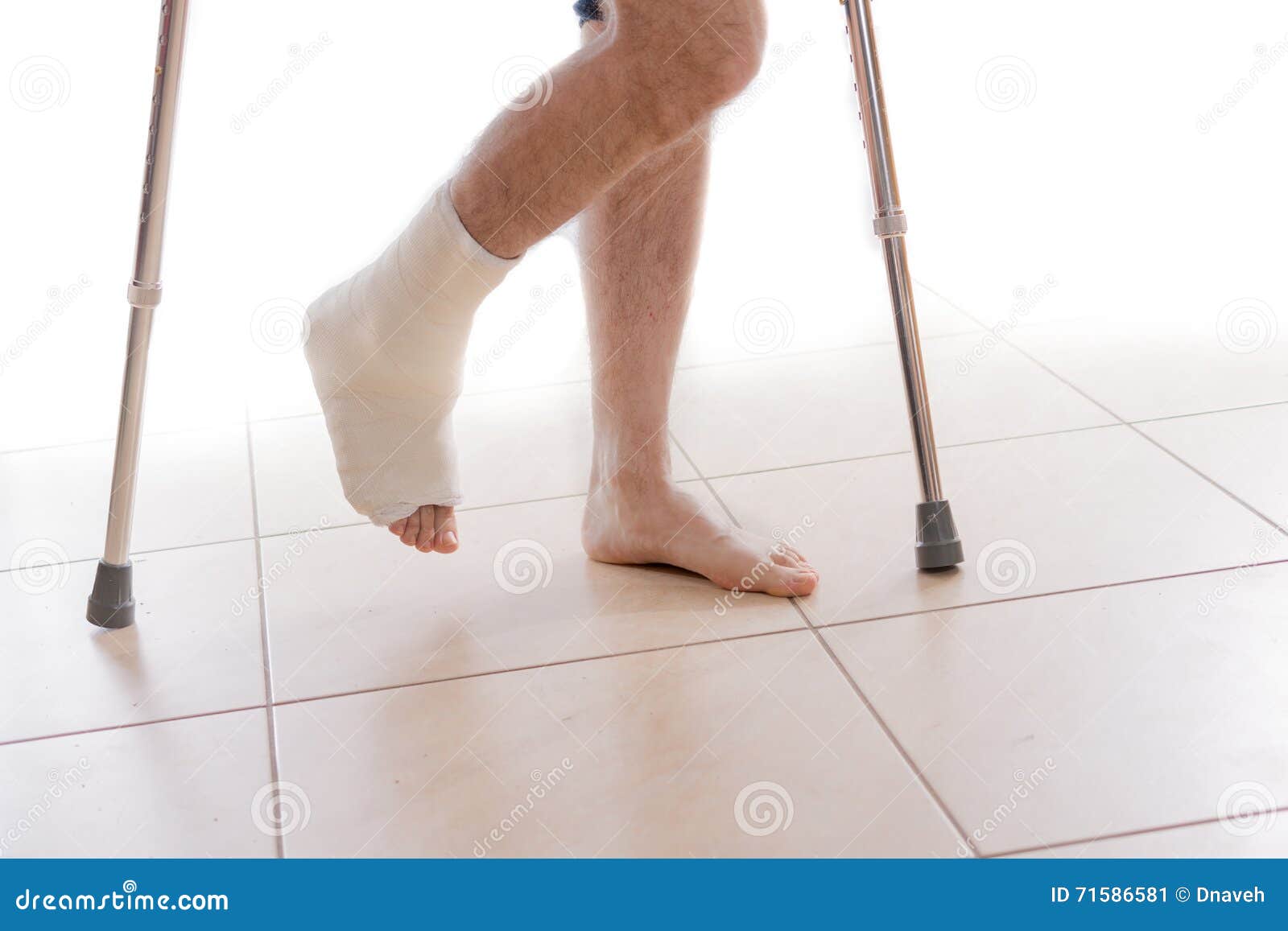 Many people mistake an ankle fracture for an ankle sprain, but the consequences are completely different and therefore require accurate and early diagnosis. Treatment and rehabilitation at home depends on this. Fortunately, both surgical and non-surgical treatments are being used today. All ankle fracture injuries should be evaluated by a physician to determine severity.
Many people mistake an ankle fracture for an ankle sprain, but the consequences are completely different and therefore require accurate and early diagnosis. Treatment and rehabilitation at home depends on this. Fortunately, both surgical and non-surgical treatments are being used today. All ankle fracture injuries should be evaluated by a physician to determine severity.
How a fracture occurs
Ankle fractures, more commonly known as ankle fractures, occur when one or more of the bones that make up the ankle joint is broken. Although an ankle fracture is an injury seen at almost any age, it is more common among older people and athletes who are physically active.
When the bones are damaged, the ankle becomes unstable. With the addition of ligament injuries, the injury can become a very serious problem, complications after an ankle fracture are possible.
An ankle fracture can be caused by sudden, inadvertent movement, such as twisting the ankle during sports or activity. Car accidents can also cause ankle fractures, especially after heavy impacts.
Car accidents can also cause ankle fractures, especially after heavy impacts.
Also, a person can trip, fall, twist the ankle – this can cause an ankle fracture. Depending on age and previous health conditions, this problem can develop into much more serious damage if left untreated. Source:
Ankle injury analysis. Tailashev M.M., Salatin P.P., Sobolev V.V., Pozikov V.V., Kolesnikov A.S. Acta Biomedica Scientifica, 2008. p. 144-145.
Classification of ankle fractures
The ankle joint itself is formed by three bones – this is the largest tibia, then the fibula (shin bone) and the talus. It is located in the area between the calcaneus, as well as the greater and fibular bones. Ankle fractures are classified according to the area of the broken bone:
- fracture in the area of the medial malleolus is the inner surface of the tibia;
- posterior malleolus injury is the dorsum of the tibia;
- lateral malleolus fracture is an injury to the edge of the fibula.

The stability of the ankle joint is determined by the strength of the ligaments and bones. In case of fractures in the area of the ankle joint, two joints are affected:
- ankle joint – formed by the lower leg, talus, fibula;
- joint syndesmosis is the area between the tibia and fibula held together by ligaments Source:
Ankle joint fractures and treatments. Cherednik A.A., More Gautam Saherbao, Al-Fakih Abdulaziz. Bulletin of Medical Internet Conferences, 2014. p.432.
Symptoms
Since a sprain can sometimes feel like a broken ankle, it is always important to consult a doctor. Assessing the symptoms of an ankle fracture and post-injury pain helps in determining how serious the injury is.
An ankle fracture is accompanied by one or all of the following symptoms:
- pain at the fracture site, which in some cases may radiate from the foot to the knee;
- Significant swelling that may occur along the length of the leg or be more localized.
 How long the swelling lasts will depend on the severity of the injury and the amount of damaged tissue;
How long the swelling lasts will depend on the severity of the injury and the amount of damaged tissue; - a bruise that appears shortly after the injury;
- inability to walk, stepping on the whole leg. Therefore, the doctor will tell you how to walk correctly after an injury. However, a person can walk with less severe fractures, so never rely on walking as a test to see if a bone has been broken;
- changed the appearance of the ankle – it will be different from the other ankle;
- bone protrudes from under the skin in an open fracture. Fractures penetrating the skin require immediate intervention as they can lead to severe infection and prolonged recovery.
Diagnosis
The doctor will discuss with the patient the medical history (how long it hurts, before the injury) and symptoms. He will also ask how the injury happened and examine the affected area. If the traumatologist believes that you may have broken your ankle, they will order a series of examinations to more fully study the injury.
X-ray : X-rays can show if the ankle bone has been broken and how many fragments of the broken bone are there. They can also determine if there is a dislocation (tear between broken bones). The doctor may also take x-rays of other parts of the leg or foot to make sure nothing was damaged as a result of the injury.
Stress Test : A stress test is performed to determine if surgical procedures are needed to heal an injury. The doctor will put some pressure on the ankle and take a special x-ray to determine the severity of the lesion.
CT Scan (Computed Tomography): If the fracture extends beyond the ankle joint, a CT scan may be required to further investigate the injury. CT scanning allows you to get an image of a series of images in different planes, by which the doctor can determine the severity of the injury. Source:
Comprehensive diagnosis of ankle injuries. Kim L.I., Dyachkova G.V. Genius of Orthopedics, 2013. pp. 20-24.
pp. 20-24.
MRI scan (Magnetic Resonance Imaging): If the doctor suspects a ligament injury has occurred, they may order an MRI scan to better view the affected area. MRI can look deeper into bones and soft tissues, such as ligaments, to create higher resolution images than most other tests.
Ankle fracture first aid
Ankle fracture treatment depends on the type and severity of the injury. First aid is needed to prevent further damage from a broken ankle and shorten the time for bone healing.
- Rest : relieve the injured ankle. Walking can lead to further injury, and only a doctor can determine when to step on your foot.
- Ice : apply an ice pack to the injured area by placing a thin towel between the ice and the skin. You need to use ice for 20 minutes and then wait at least 40 minutes before doing a cold compress again.
- Compression : An elastic bandage should be used to control swelling.

- Height : Ankle should be slightly elevated above heart level to reduce swelling.
Ankle fracture: treatment, clinical guidelines
If the traumatologist determines that the patient has a broken ankle, it is necessary to determine what type of fracture it is and how to treat it. Ankle fractures can be treated with non-surgical methods, as long as the injury is not too severe or unstable.
- Lateral fibula fracture . If the ankle is stable, non-surgical healing methods are available. These can range from wearing tall tennis shoes to short casts. The doctor may recommend rest and crutches to keep the foot light and to make sure that the fragments do not move during healing.
- Fracture of the tibia on the inside of the lower leg . If the fracture is all in place or if it is very minor, it can be cured if the ankle is not stressed for 6 weeks. A short leg bandage or a removable bandage, as well as a doctor’s recommendation when it is possible to walk, usually speeds up the healing process.

- Fracture of the back of the leg at the level of the ankle joint . In most cases, the fibula also breaks due to the fact that it shares ligaments with the posterior malleolus. If the ankle remains stable, it can be treated without surgery. Treatment may include a short leg bandage or a removable brace. It is important to determine the severity so that arthritis does not develop. As you heal, you will need to gradually develop an ankle fracture.
- Bimalleolar equivalent fracture (two of the three parts of the ankle broken) indicates that the ligaments on the inside of the ankle are also damaged. Because these injuries are usually unstable, surgery is usually recommended. In case of health problems that may interfere with the operation, a splint and a short bandage on the leg may be applied. You will need to see your doctor regularly to make sure your ankle remains stable.
- Trimalleolar fracture (all three parts of the ankle are broken).
 Since this is a very difficult situation, surgery is almost always recommended. Rare non-surgical treatment options include a short leg bandage, a splint, and regular doctor visits.
Since this is a very difficult situation, surgery is almost always recommended. Rare non-surgical treatment options include a short leg bandage, a splint, and regular doctor visits.
If the joint located between the tibia and fibula is damaged, and the ligaments are also affected, the damage can heal like an ankle sprain. The injury can be treated by removing weight from it without surgery.
However, in most cases sprains and one or more fractures occur. Recovery after an ankle fracture is rarely without surgical treatment. Source:
Treatment tactics for intra-articular fractures of the ankle joint (literature review). Zedgenidze I.V., Tishkov N.V. Acta Biomedica Scientifica, 2013. pp. 178-182.
Surgery
In the event that non-surgical treatments do not work or the ankle is too unstable, your doctor may recommend surgery for a broken ankle, followed by rehabilitation. After the operation, it is important to walk the leg, perform all the prescribed procedures in order to shorten the rehabilitation period.
Features of the operation: if the fragments are not in place, the bone fragments must be moved surgically. The fragments had to be returned to their normal position and fastened with special screws and metal plates attached to the outer surface of the bone. The surgery may involve bone grafting so that the new bone can actively heal. It is fixed with screws and a metal plate. This may reduce the risk of arthritis and speed up the return of movement.
Possible complications
After treatment, it is important to follow the surgeon’s instructions. Failure to follow this rule can lead to infection, deformity, arthritis, and chronic pain. Source:
Errors and complications in the treatment of complex ankle fractures. Salikhov R.Z., Pankov I.O., Plakseichuk Yu.A., Solovyov V.V. Practical medicine, 2014. p. 128-131.
- Mistakes and complications in the treatment of complex fractures of the ankle joint. Salikhov R.Z., Pankov I.O., Plakseichuk Yu.
 A., Solovyov V.V. Practical medicine, 2014. p. 128-131
A., Solovyov V.V. Practical medicine, 2014. p. 128-131 - Ankle injury analysis. Tailashev M.M., Salatin P.P., Sobolev V.V., Pozikov V.V., Kolesnikov A.S. Acta Biomedica Scientifica, 2008. p. 144-145
- Comprehensive diagnosis of ankle joint injuries. Kim L.I., Dyachkova G.V. Genius of Orthopedics, 2013. p.20-24
- Fractures of the ankle joint and methods of treatment. Cherednik A.A., More Gautam Saherbao, Al-Fakih Abdulaziz. Bulletin of Medical Internet Conferences, 2014. p.432
- Therapeutic tactics for intra-articular fractures of the ankle joint (literature review). Zedgenidze I.V., Tishkov N.V. Acta Biomedica Scientifica, 2013. p.178-182
Useful information about an ankle (ankle) injury
Ankle fractures most often occur in winter, due to ice and the unstable position of the legs relative to the road. It is enough to put the foot a little in the wrong position, to hurry a little – and you can get a fracture. It is extremely difficult to insure against this injury, because both athletes and ordinary people can get it.
Ankle injuries are of the following types:
- Fracture of the medial malleolus;
- Fracture of lateral malleolus;
- Displaced ankle fracture;
- Closed and open ankle fracture.
Symptoms of a fracture
There are some general symptoms that can help identify an ankle fracture. These include:
- – Severe pain. Often, it can even occur not at the site of the injury;
- – Loss of joint mobility;
- – Numbness of the injured limb;
- – Weakness and dizziness;
- – Nausea
- – Chills and feeling cold;
Signs of a fracture usually appear immediately after injury. If these signs are too pronounced, then you should immediately go to the hospital.
In severe cases of an ankle fracture, the following signs appear:
- – numbness of the foot
- – pallor of the skin due to damage to nerve endings and blood vessels.
- – deformation of the bones, when their fragments come out, breaking through the skin.

When an injury such as a fracture of the lateral malleolus with displacement occurs, the following symptoms and signs appear at the site of the injury:
- acute pain;
- inability to stand up.
- pronounced swelling of the lower leg
- the victim cannot move his leg, unbend or flex the injured joint. When receiving a fracture without displacement, the patient can make limited movements with the crippled limb.
A closed fracture of the lateral malleolus has the following symptom: when pressing on the middle of the lower leg, pain appears at the site of the fracture.
A displaced fracture of the medial malleolus can be distinguished by the following signs:
- – sharp pain and swelling in the area of the injured joint.
- – the patient, as a rule, cannot move independently,
- – the inability to lean on the injured limb.
An undisplaced ankle fracture is usually not too painful.:max_bytes(150000):strip_icc()/anklepainfinal-01-5c6330f346e0fb0001587c32.png) There are no bruises and bruises at the site of the injury, since the tissues and vessels that are nearby are not injured. Unlike an open fracture, which is accompanied by severe bleeding and pronounced symptoms, an ankle fracture without displacement differs only in the presence of a large swelling of the leg.
There are no bruises and bruises at the site of the injury, since the tissues and vessels that are nearby are not injured. Unlike an open fracture, which is accompanied by severe bleeding and pronounced symptoms, an ankle fracture without displacement differs only in the presence of a large swelling of the leg.
First aid for a fracture
If the victim has any signs characteristic of a fracture of the ankle, then he should be given immediate assistance. With untimely or incorrectly provided first aid, the consequences can be serious.
How is the treatment
The key factor in the treatment of fractures of this type is the restoration of all functions of the limb. If you take the doctor’s recommendations without due seriousness, then the leg may lose its former mobility.
There are two main methods for treating an ankle fracture:
- Conservative method;
- Surgical method of treatment.
One or another type of treatment will be chosen depending on the nature and type of the injury. In no case should the treatment of an ankle fracture be postponed until later. This can result in many complications for the patient.
In no case should the treatment of an ankle fracture be postponed until later. This can result in many complications for the patient.
Treatment | Recovery period and possible consequences |
Treatment without a cast | Recovery is quite fast (six to eight weeks). |
Casting | The recovery period will depend on the severity of the injury. Full recovery is possible after one and a half to two months from the date of injury. |
Surgical treatment | Complete recovery occurs in one and a half to two months. If the treatment for a fracture was incorrect, then after the injury, subluxation of the joint will remain. Subsequently, this can lead to the development of arthrosis of the ankle joint in the patient. |
Skeletal traction | Recovery usually takes four months summary. |

 Faulty equipment, such as shoes that are too worn or not properly fitted, can contribute to stress fractures and falls. Improper training techniques, such as not warming up and stretching, also can cause ankle injuries.
Faulty equipment, such as shoes that are too worn or not properly fitted, can contribute to stress fractures and falls. Improper training techniques, such as not warming up and stretching, also can cause ankle injuries. Fractures that extend into the joint can cause arthritis years later. If your ankle starts to hurt long after a break, see your doctor for an evaluation.
Fractures that extend into the joint can cause arthritis years later. If your ankle starts to hurt long after a break, see your doctor for an evaluation.

 How long the swelling lasts will depend on the severity of the injury and the amount of damaged tissue;
How long the swelling lasts will depend on the severity of the injury and the amount of damaged tissue;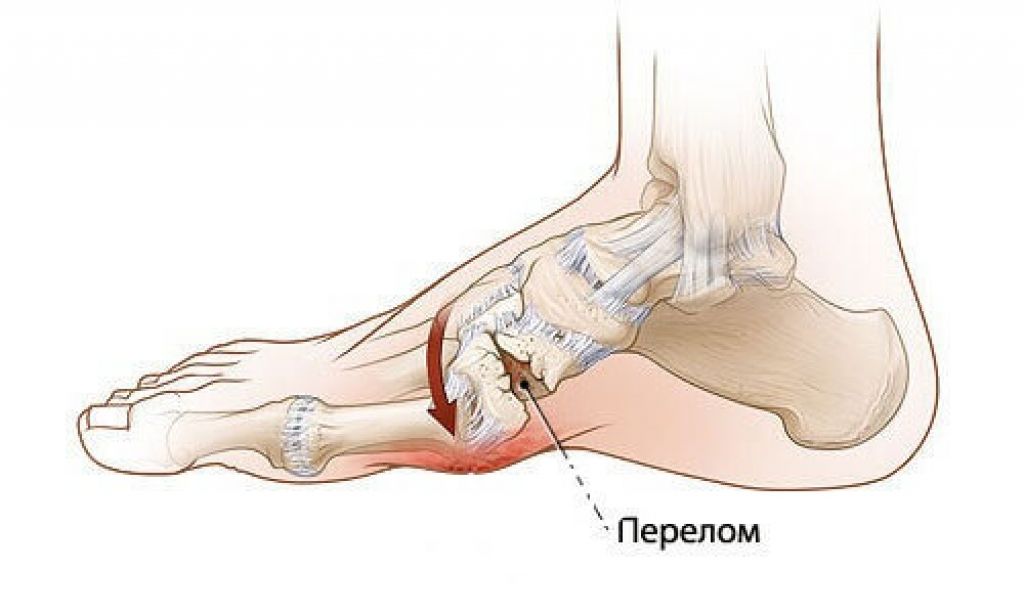

:max_bytes(150000):strip_icc()/broken-ankle-2548484_final-01-6c6936b258494cee891a1c014ebdd21a.png) Since this is a very difficult situation, surgery is almost always recommended. Rare non-surgical treatment options include a short leg bandage, a splint, and regular doctor visits.
Since this is a very difficult situation, surgery is almost always recommended. Rare non-surgical treatment options include a short leg bandage, a splint, and regular doctor visits.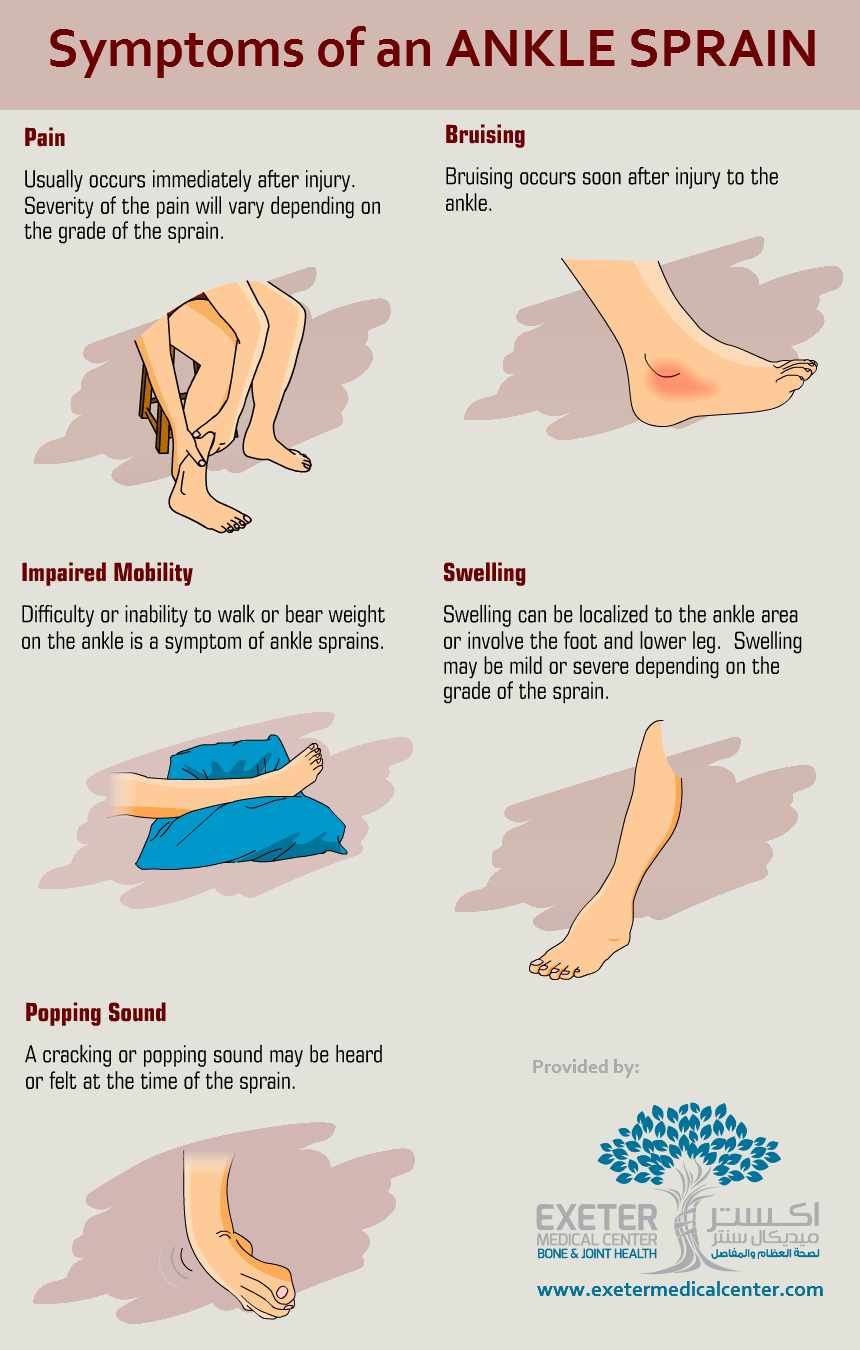 A., Solovyov V.V. Practical medicine, 2014. p. 128-131
A., Solovyov V.V. Practical medicine, 2014. p. 128-131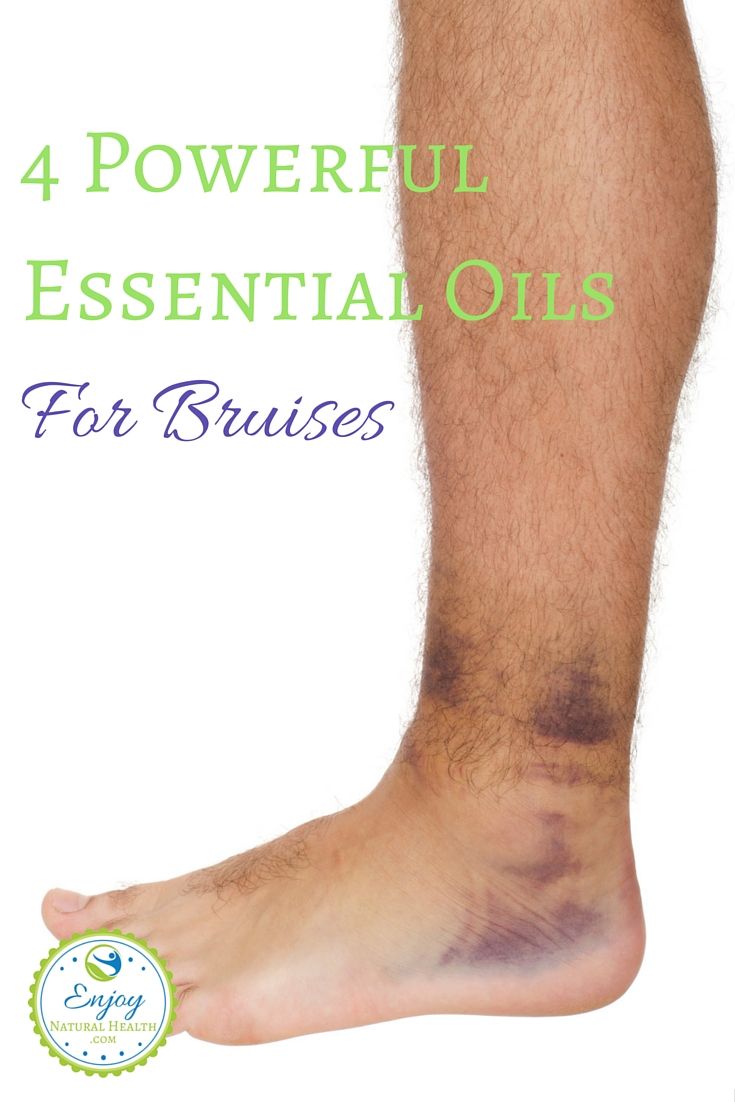
:max_bytes(150000):strip_icc()/talus-fractures-2549436_final-3b5774c8102f4aa58615e0df5e2af0f7.png)